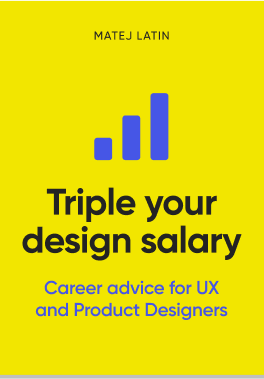I remember how a few years ago I’d always look for inspiration on Dribbble. I was freelancing and working on various projects for increasingly demanding clients. I had just started to dive deeper in to UX design and I was finally starting to understand what it really is.
This means that I started to sketch a lot more. I always loved to sketch, scribble and draw. I always felt this need to put something on the paper. Something visual I can refer to later on. Something I put out of my head—an idea that gets transformed into something physical.
I remember a particular time when I was looking for some inspiration and stumbled upon this sketch. The effect it had on me was the opposite of what I was looking for. It didn’t inspire me. It demotivated me. My sketches were never made of straight lines, shading and nice depictions of people, maps and UI elements. My sketches were ugly, with lots of corrections, lines that were too long, boxes that were too small. If someone took a look at them they wouldn’t be able to understand a thing without my explanation.
Sketches aren’t supposed to be perfect
But that’s the thing about sketches. There’s a secret that not a lot of designers know.
The fundamental thing about sketching is that it is about asking not telling.
— Bill Buxton
Your sketches don’t have to tell anything to anyone else but yourself. Even then, they’re merely a tool to ask further questions. By asking further questions we get to asking the right questions. Eventually. And only if you ask yourself enough questions. This means, a lot of sketching.
The goal of sketching is not to do a perfect sketch that looks awesome. It’s not for sharing information with others. It’s for putting an idea to the paper. For me personally, it’s one of the three magic moments in the design process. By drawing one sketch that looks more like a drawing, designers miss the main purpose of sketching. To depict an idea as it is currently in your head—with all the holes that represent the missing information. By drawing as many sketches as possible and putting as many ideas from your head to paper we get in the right mindset and start to discover the missing parts.
The next time you want to sketch something, don’t pay any attention to what your sketch looks like. Instead, try to produce as many as possible—different ideas, multiple possible solutions our different combinations of UI elements. Your job shouldn’t be assessed based on your sketches. It’s the final product that we need to focus on. You sketches need to be something that you can throw away if it’s not what you need. It’s something that you spend minutes drawing instead of hours. It’s something that will take you from a cloud of ideas to a functioning product.
Some might even argue that sketching is a complete waste of time and should be skipped altogether. It either takes too long or it’s done very quickly. Both arguments serve as a good excuse to do so. I mentioned earlier that I think sketching is one of the three magic moments in the design process (I’ll write about these at some time). Sketching is the most important one. Your idea takes form for the first time and makes everything clearer. It’s not a perfect representation of what you want to do but this is where the magic of sketching lies. They can, should and will change through time. The quicker they change, the better.

1 comment